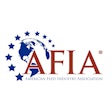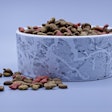Because of its integral role in the regulation of petfoods, my commentaries frequently mention the Association of American Feed Control Officials (AAFCO). I presume that the reader understands the nature of the organization and its general functions. However, the briefest surf on the Internet reveals many misunderstandings, if not downright misrepresentations about what AAFCO is and does. Because many of the same errors appear on multiple company and organizational websites, I don't wish to single out any of them by name. However, below are a few examples of what's out there.
Wh at does AAFCO stand for?
Granted, the words making up the acronym "AAFCO" are not immediately intuitive. The most frequent error I observe is transposition of the first two "A"'s, i.e., "American Association of Feed Control Officials." However, I've also seen "Association of American Food Control Officials," "Association of Animal Feed Control Officials," "American Association of Feed Control Officers" and "American Association for Feed Control Officials."
AAFCO/industry collusion?
Many sites want the reader to think AAFCO is a petfood industry organization, or at minimum, a puppet of the industry. Here are a few examples:
"(AAFCO) … is basically an industry group.
"AAFCO also consists of members from the petfood manufacturing industry."
"Because many petfood manufacturers are on the roster of … AAFCO … (it) is protecting manufacturers, not your pet."
"Today AAFCO's membership roster reads like a 'who's who' from the petfood industry."
And my personal favorite:
"(In) 1974 … the petfood industry created a group called (AAFCO)."
A quick look at the AAFCO bylaws would confirm that while it is not a government organization, membership is limited to government employees. True, representatives of industry associations can be acknowledged as committee advisors, or may be asked to serve on task forces or working groups under a committee. However, the same is true for representatives of consumer advocate organizations.
In any event, these participants remain non-members, and they cannot vote in any AAFCO committee, board or association matters. Anyone who thinks AAFCO "rubber stamps" the will of the industry has obviously never attended an AAFCO meeting. On the contrary, the meeting discussions are often quite adversarial, and it is a rare occasion when there isn't significant disagreement between parties, either between AAFCO and industry or among the different industry groups. In the end, though, it is AAFCO that makes the final ruling on the matters before it.
AAFCO definitions
Many websites love to cite some of AAFCO's less "appetizing" feed ingredient definitions as evidence of all the terrible things that are commonly used in petfood (except for the company site's sponsored product, of course). They often give the impression that petfoods are largely comprised of nothing but "food processing waste," "hydrolyzed poultry feathers" and "dried poultry litter." However, what they fail to mention is that if such an ingredient was included in a petfood, by law it would have to be declared by that exact name on the ingredient list. Frankly, I've never seen "unborn calf carcasses," "polyethylene roughage replacement" or "ensiled paunch" declared on a petfood label. The only rational conclusion one can reach is that petfoods simply don't contain these ingredients. However, that fact doesn't make as good a story.
A related controversy is the frequent assertion that the majority of commercial petfoods contain euthanized dogs and cats. In the effort to be completely forthright, regulatory officials cannot definitively exclude all possibility of that occurring. However, a person with knowledge and understanding of the different types of rendering facilities and use of products from these plants can reasonably surmise that the potential for that happening is very remote.
Websites ignore the ingredient name factor, too. Only a very few AAFCO-defined ingredients could conceivably contain materials from rendered pets, and use of those ingredients is rare nowadays.
AAFCO profiles/feeding trials
The websites that really rile me often involve disparagement of the AAFCO methods of nutritional adequacy substantiation. Constructive criticism is perfectly legitimate. In fact, I've made public comments about the methods' respective virtues and limitations myself. However, often the website's aim is to vilify the intentions of AAFCO and purpose of the profiles and feeding trials as regulatory tools. For example:
"A food can be created from old leather boots, wood shavings and crankcase oil that will meet the technical requirements."
"It is easy to see how a poor quality diet could be fed for only six months without seeing adverse health effects."
"AAFCO was formed … because the industry found NRC's regulations to be too restrictive and created its own procedures for claiming nutritional adequacy in petfoods. They also decided that instead of lengthy feeding trials, chemical nutritional analysis would be conducted to determine minimum nutritional requirements."
"AAFCO believes that an organization with close ties to the petfood manufacturing industry is sufficiently qualified to alter nutrient profiles created by NRC scientists."
The most disingenuous aspect of such statements is when they precede claims for nutritional superiority of petfoods or recipes for home formulations that do not meet, or at least have not been reasonably documented to meet, AAFCO requirements. Some may be good, but I've seen many products and recipes that fail the sniff test outright. Frankly, if a food was so wonderfully nutritious, one would think it could breeze through the AAFCO substantiation requirements. For some websites, dismissing the merits of AAFCO seems easier.
Other sites disparage AAFCO with the assurance that a particular supplement will correct the deficiencies AAFCO doesn't address. Outside of glowing testimonials or long-winded promises, I am not aware of sites that offer explicitly detailed explanation of the scientific testing conducted that would supersede established AAFCO methodology.













